INTRODUCTION
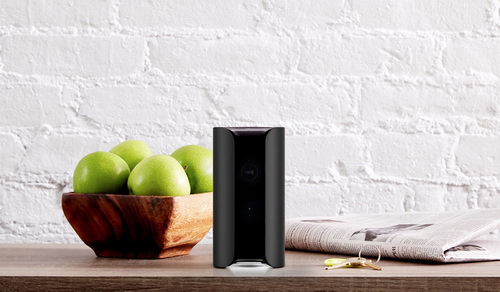
Home security systems have increased in number during the past three years so shoppers currently in the market for one have a large number of such devices to choose from including a wide range of security cameras. It goes without saying really but unlike 2-3 years ago most of the available models now offer Full HD 1080p video quality with NV (night vision) mode, one or two way audio (receive/transmit) and a plethora of interesting and useful features including motion sensors, intelligent alerts and even cloud recording for peace of mind. Canary which we have here with us today is one such security camera (among the most popular ones currently) and although it was first announced back in 2013 through an very successful Indiegogo crowdfunding campaign (where it managed to raise roughly 2 million dollars) it did take almost three years to get released and have some of its initial bugs resolved.
Everyone has a right to feel safe and secure, and security comes from having the information you want when you want it. It’s the guiding principle behind our work, and reinforces our belief that the best technology makes you smarter, puts you in control, and gives you access to the information you need. That’s why we’re dedicated to developing easy-to-use technology that protects, empowers, and has a meaningful impact on people, families, and their communities. As a company, we are unified by three core values: Information for everyone, Make the world a smaller place and Create lasting impact. We want to make the world a safer place by giving people the information they need to make smart decisions when something is wrong, and helping them feel connected when everything is right.
One of the first things that caught our eye when Canary was pitched in that Indiegogo campaign was its aluminum/plastic cylindrical body (currently available in white, black or silver) which could practically blend in anywhere you placed it (looked more like a portable speaker than a security camera). Inside that cylindrical body Canary squeezed a Full HD 1080p night-vision camera that features an 147-degree field of view (wide-angle lens), motion sensor, ambient sensors (light, temperature, humidity and air quality), 3-axis accelerometer, high-quality microphone, 90+ dB panic siren, 2.4GHz Wi-Fi radio (802.11 b/g/n), RJ45 Ethernet port and a status LED ring (green for when the device is armed, yellow when disarmed and white when starting up). In terms of cloud storage (recording with AES-256bit data encryption) by default Canary gives you 24 hours of video history (that drops depending on how many Canary devices you have) but for more demanding users they give up to 30 days of recorded video history (will also reimburse your insurance in case of theft with up to USD1000) with a monthly fee of USD9.99. Time for us to see whether or not the Canary is well worth a place in your home or office.
SPECIFICATIONS AND FEATURES

PACKAGING AND CONTENTS
The Canary gets shipped inside a white box that has a product picture at the front (you can see the color included in the package) right over the main product features.

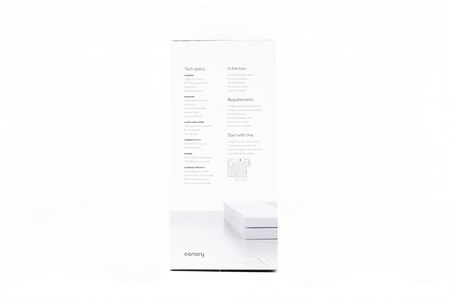 A few words about what the Canary was made for are placed on the right side of the box while on the left we see the technical specifications list.
A few words about what the Canary was made for are placed on the right side of the box while on the left we see the technical specifications list.
The main product features are also listed at the rear of the box (this time however we see in-depth descriptions).
Opening the box will reveal the main box which has the Canary logo on it.
Packing is quite excellent as expected from such a product.
Contained inside the box are the Canary smart home security camera, USB to micro USB power cable, wall adapter, 3.5mm cable, Canary sticker, user manual and the warranty paper.
THE CANARY
Remember when i said that the 152.4mm tall, 76.2mm in diameter and 396g heavy Canary looks like a Bluetooth speaker? Well i placed it right next to the Ultimate Ears Boom to show exactly what i ment.
The camera lens is placed at the front of the device along with the IR (night vision) LEDs, the microphone and the light/motion sensors.
As you can see the top of the device has several holes for the 90+ dB siren inside.
Moving at the rear we find the RJ45 Ethernet port, micro USB power port and a 3.5mm port.
The LED status ring is placed at the base of the device right next to the reset button and a perforated section (for the ambient/homehealth sensors).
SETUP
To setup the Canary you will need to download their iOS/Android app and follow the steps as seen on the screen of your smartphone/tablet.
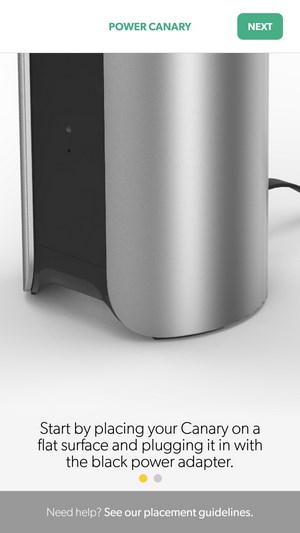
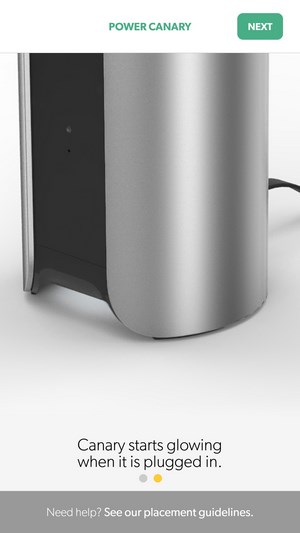
Of course you will first need to position the Canary on a flat surface, plug it into the power socket and wait until the status LED starts blinking.
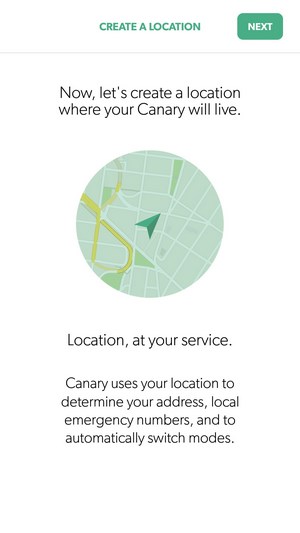
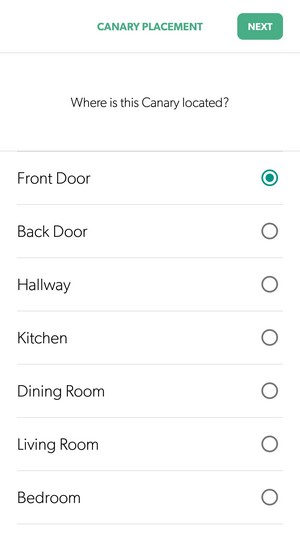
Next on the menu is to tell the Canary where it's located both in terms of place and area (this is due to the geofencing technology which allows the Canary to arm and disarm itself automatically when it detects a registered device within a certain range).
There are two versions of the Canary available currently, one which can be configured wirelessly via Bluetooth and the one we have which can be configured with the bundled 3.5mm yellow cable.
You can also choose to connect the Canary either wirelessly or via Ethernet (our tests were done via Ethernet).
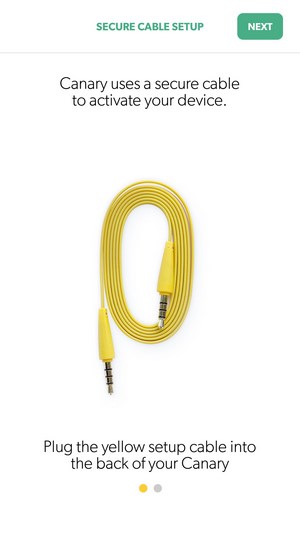
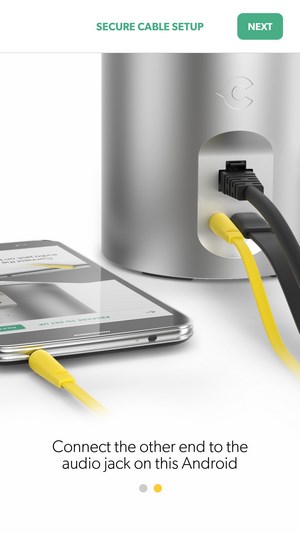
 Once you connect your smartphone or tablet with the Canary via the 3.5mm yellow cable it will begin transmitting audio signals (if your device fails to do so use another one).
Once you connect your smartphone or tablet with the Canary via the 3.5mm yellow cable it will begin transmitting audio signals (if your device fails to do so use another one).
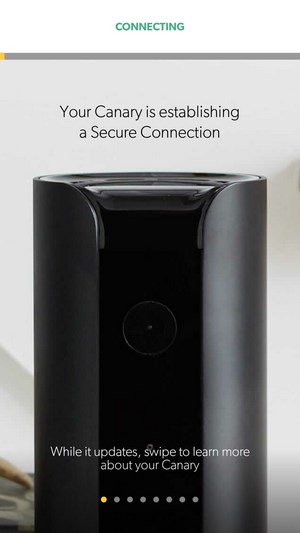
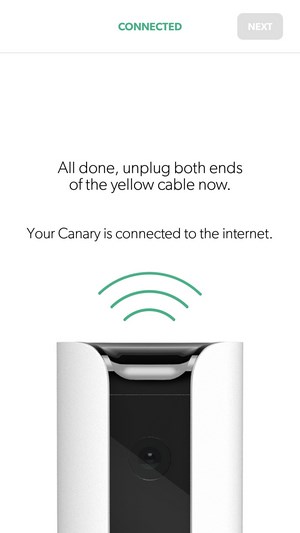
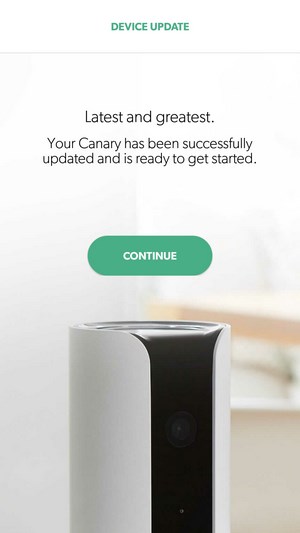
After both devices finish "pairing" and an Internet connection is established the Canary will search for software updates and once that's also done it will start recording to the Cloud.
Here you can see a comparison between the free included service and the paid membership.
ANDROID / IOS APP
Once you launch the android / iOS app you will see the main screen which shows the location of the Canary (the one you chose earlier), its name (since we used it in the Lab initially i named it Office), the current results of the ambient sensors, the settings tab (three horizontal lines at the top right) and two video choices, live and timeline (recorded).
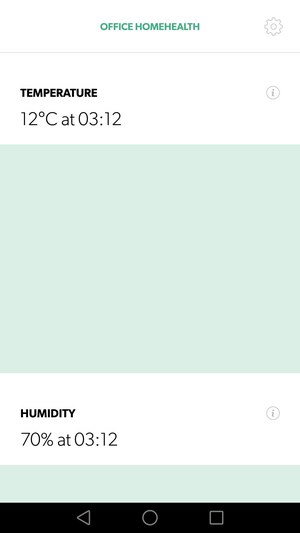
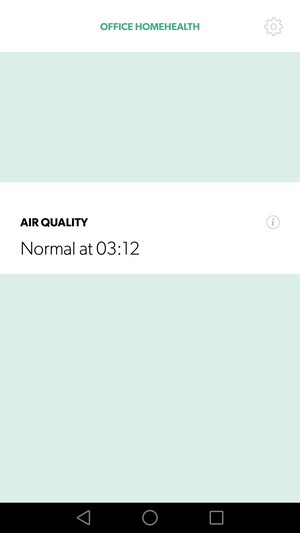
If you press on the ambient sensor data three graphs will popup showcasing the recorded numbers for the past 24 hours (as you can see there's still a small bug which causes the graphs to not show - tested it on Android v6.0).



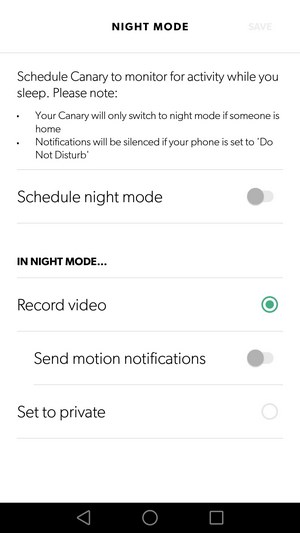
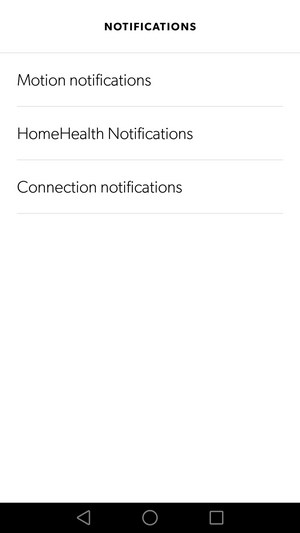
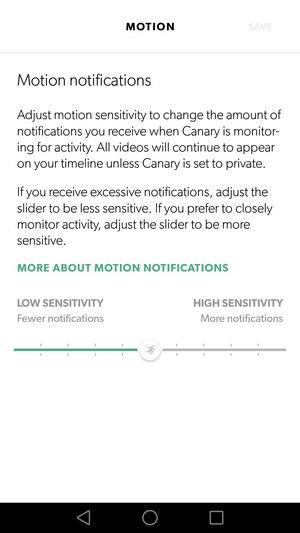


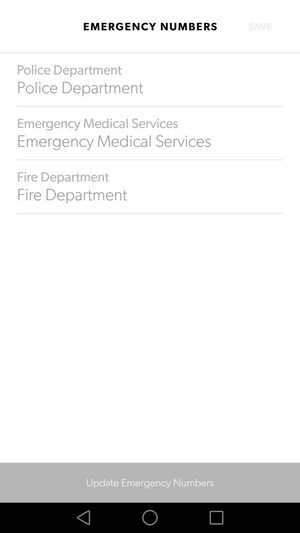
In the settings tab you can add more Canary devices, choose one of the available modes or select auto, configure the motion, ambient and connection notifications and update the emergency members (these are updated according to the where you live).
You can also access your Canary settings online as seen above.
In terms of video quality the Canary does very well especially thanks to the wide-angle lens (147 degrees). You can also sound the 90+ dB siren from within the app or make an emergency call (as mentioned earlier this is my living room and not the office, obviously).
Zooming in reveals the rather “weak” lens but I guess for one such device noone really expects excellent zoom quality.

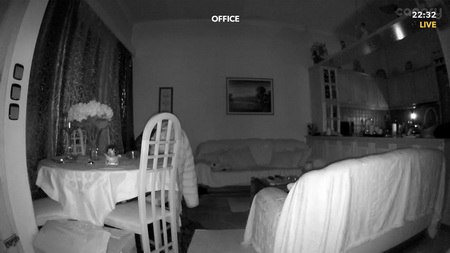
The night-vision mode is perhaps the clearest I’ve seen from such a camera (thanks to 12 small IR LEDs) but if you place the Canary on a table (or anywhere really) you will need to put it on the edge or else the IR LEDs will not cover the area well enough (as showcased above).
Again zooming in is not what I’d like it to be but again I doubt this will be a problem for such a device.
CONCLUSION
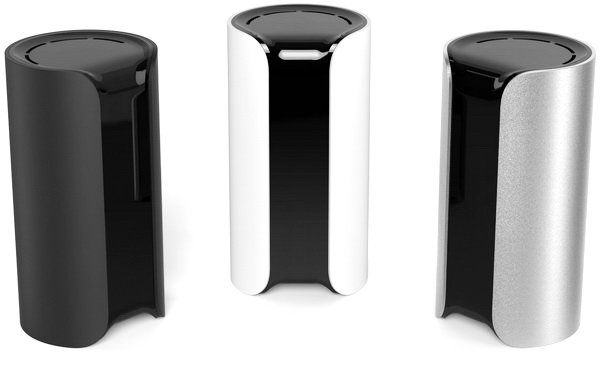
If you’ve been following NikKTech since the beginning then you should know that we were among the very first media to support Canary and their Indiegogo crowdfunding campaign but at the end of the day due to some marketing hiccups it took us roughly 2 years to get a working sample from them. Of course as expected from one such device Canary had quite a few bugs at launch so I guess in the end that was for the best. Well today and after 3 months of testing both at the lab and at home i truly feel that Canary has no serious bugs left and is currently a very solid home security system. Now personally I’d like slightly better image/video quality than what it offers (probably influenced by all the surveillance cameras I’ve used and reviewed over the years) but on one hand as I already mentioned it’s still very good while on the other the built-in microphone is actually one of the best I’ve encountered over the years (you can even listen to people whispering). Unfortunately Canary doesn’t have audio alerts so if let’s say someone breaks your door or window and it’s not within its viewing angle it will not alert you of it and from what I see that’s a feature many people would like to see implemented. The geofencing feature is also very convenient as long as you always keep the registered devices on you and not were Canary is at. I did leave my smartphone once and since Canary detected it was still at the lab it obviously thought I was too so it didn’t get armed. The ambient sensors are also a very interesting aspect of the Canary and can certainly be used in cases of a fire or gas leaks (via the alerts). I was also glad to see that the Canary comes with not one but 12 small IR LEDs which easily illuminate a large room at night. Finally thanks to the Cloud recording you don’t need local storage and for people who may need more than just 24 hours (I really think Canary should provide extra hours for people with more than one instead of reducing them) or video history you can always purchase one or more months to cover your needs.
So how much for a Canary All-In-One Smart Home Security System? Well currently you can find it for just USD157.38 inside the USA (Amazon.com) and for 178Euros inside the EU (Amazon.co.uk) a price tag which is roughly 10-15% down compared to even just 1 year ago. So although you can’t “expand” the Canary with door/window sensors and extra motion sensors like some other models in the market currently we all believe that it’s a very good home security system thanks to its audio/video quality, night-vision mode, cloud recording and available sensors and that’s why it gets our Golden Award.

PROS
- Build Quality
- Design
- Available Colors (Black, White, Silver)
- Full HD 1080p CMOS Sensor With Night Vision
- Built-In Microphone Clarity
- 90+ dB Panic Siren
- 24Hr Cloud Recording (Up To 30 Days With Extra Membership)
- Available Sensors (Motion/Light/Air)
- Automatic Arm/Disarm Via Geofencing
- Price (For Some)
CONS
- Not Compatible With 3rd Party Devices
- Reduced Cloud Recording Time If You Get More Than One Canary
- Can Only Be Placed On Flat Surfaces
- No Audio Based Alerts
- Cloud Recording Only No Local Storage

 O-Sense
O-Sense






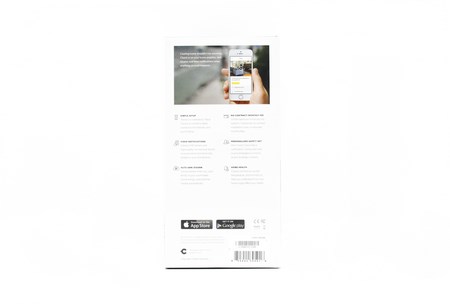
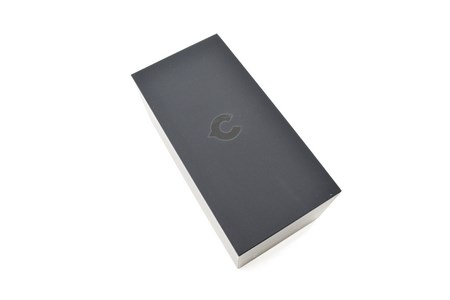
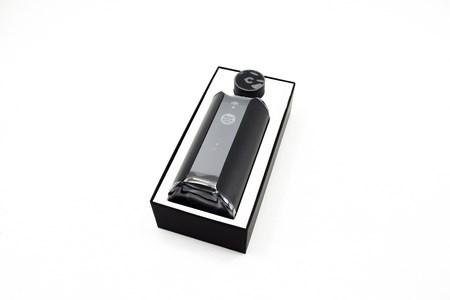
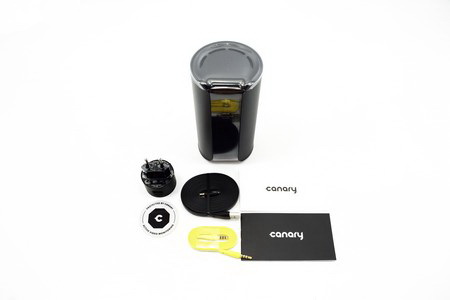
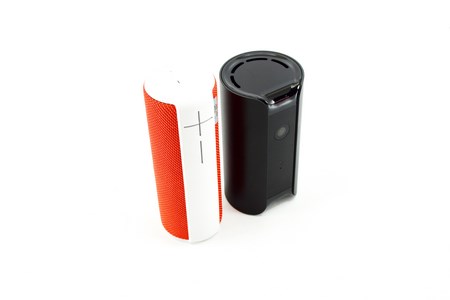
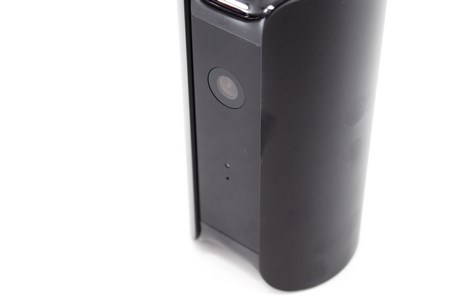
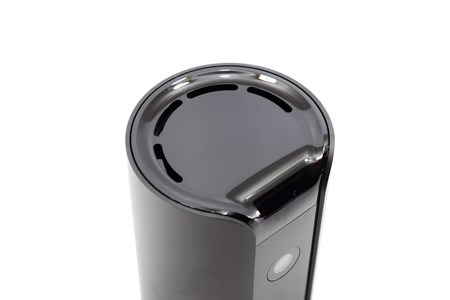
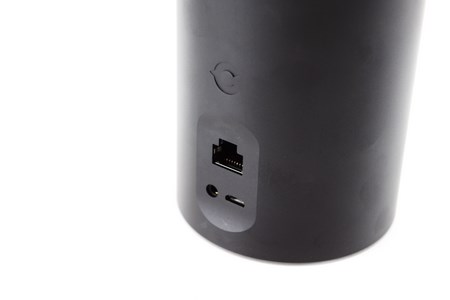
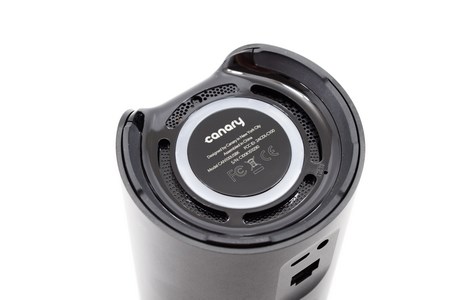
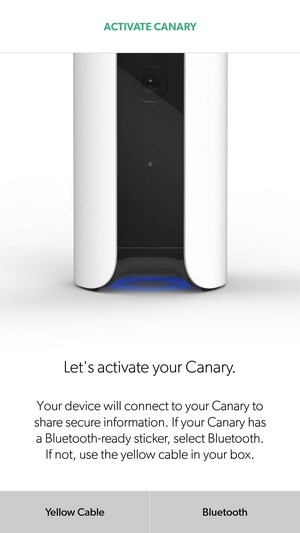
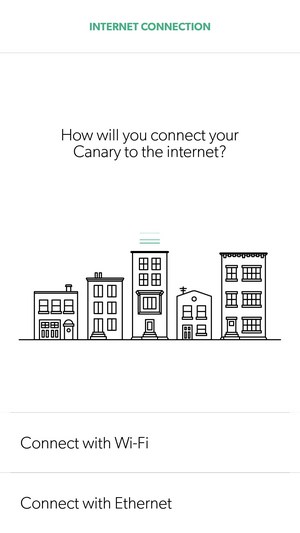

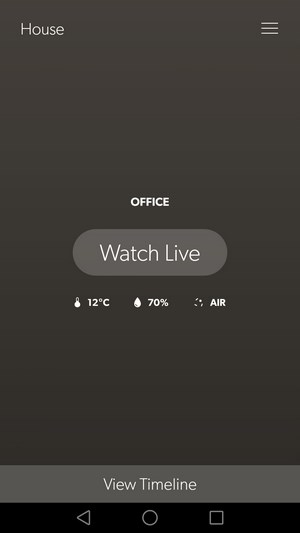
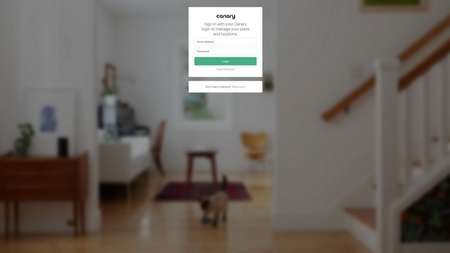
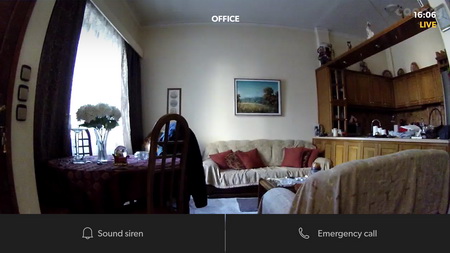

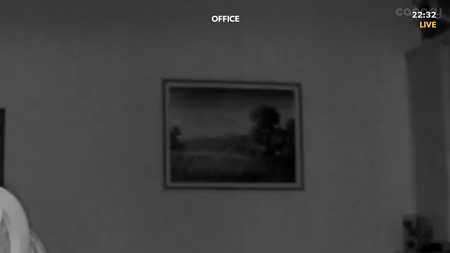


.png)

